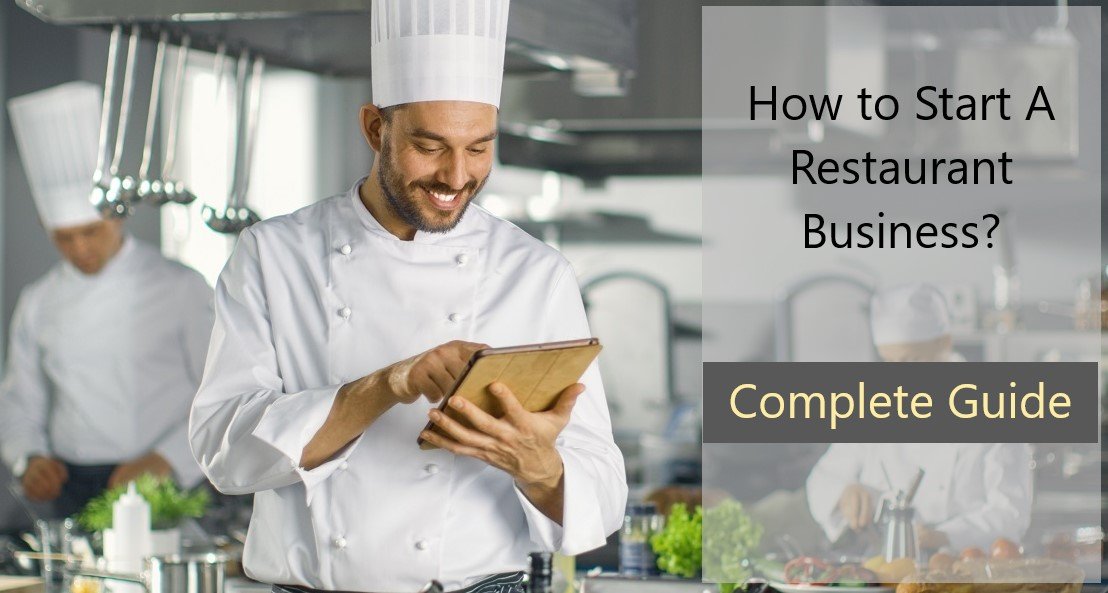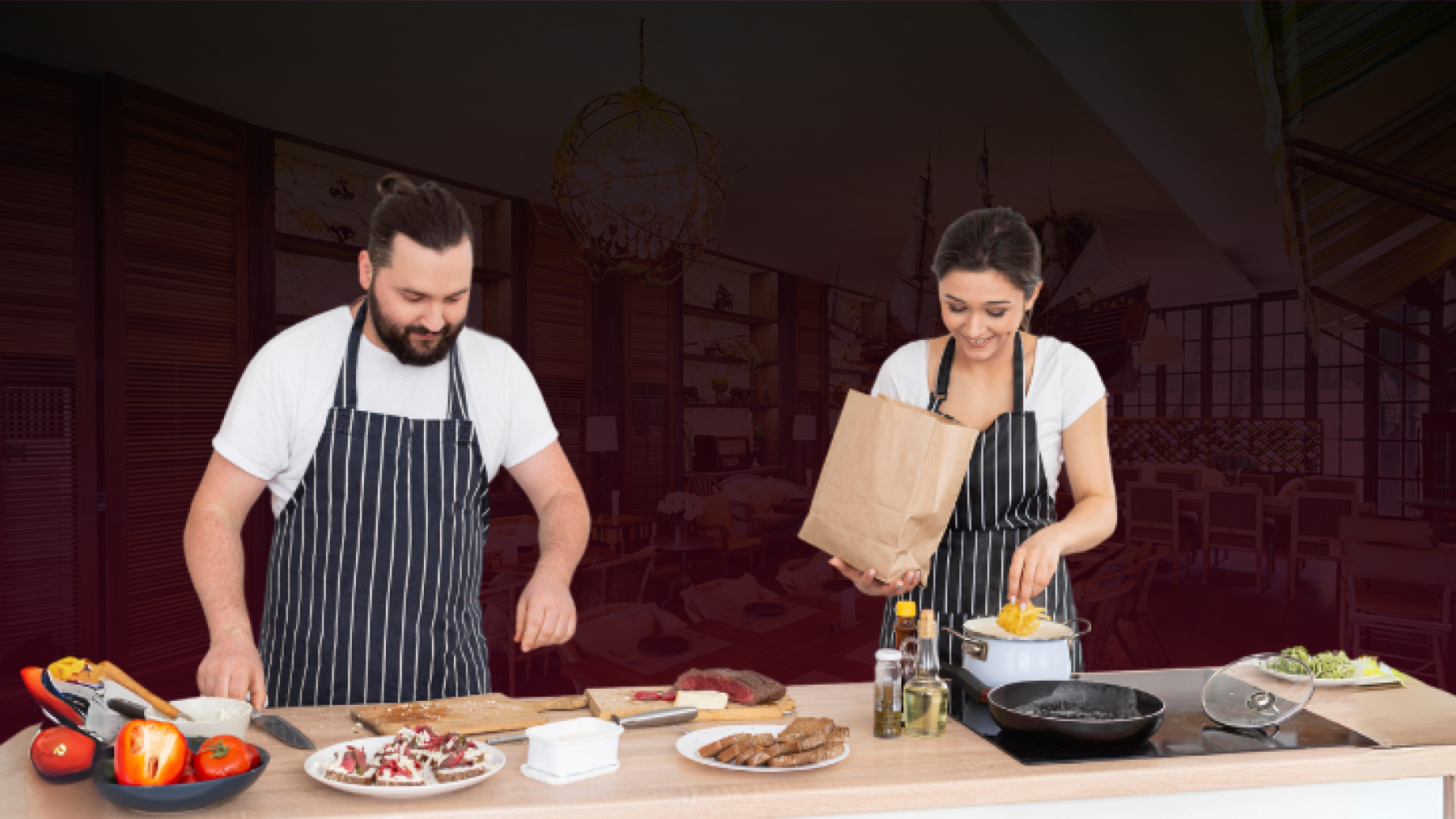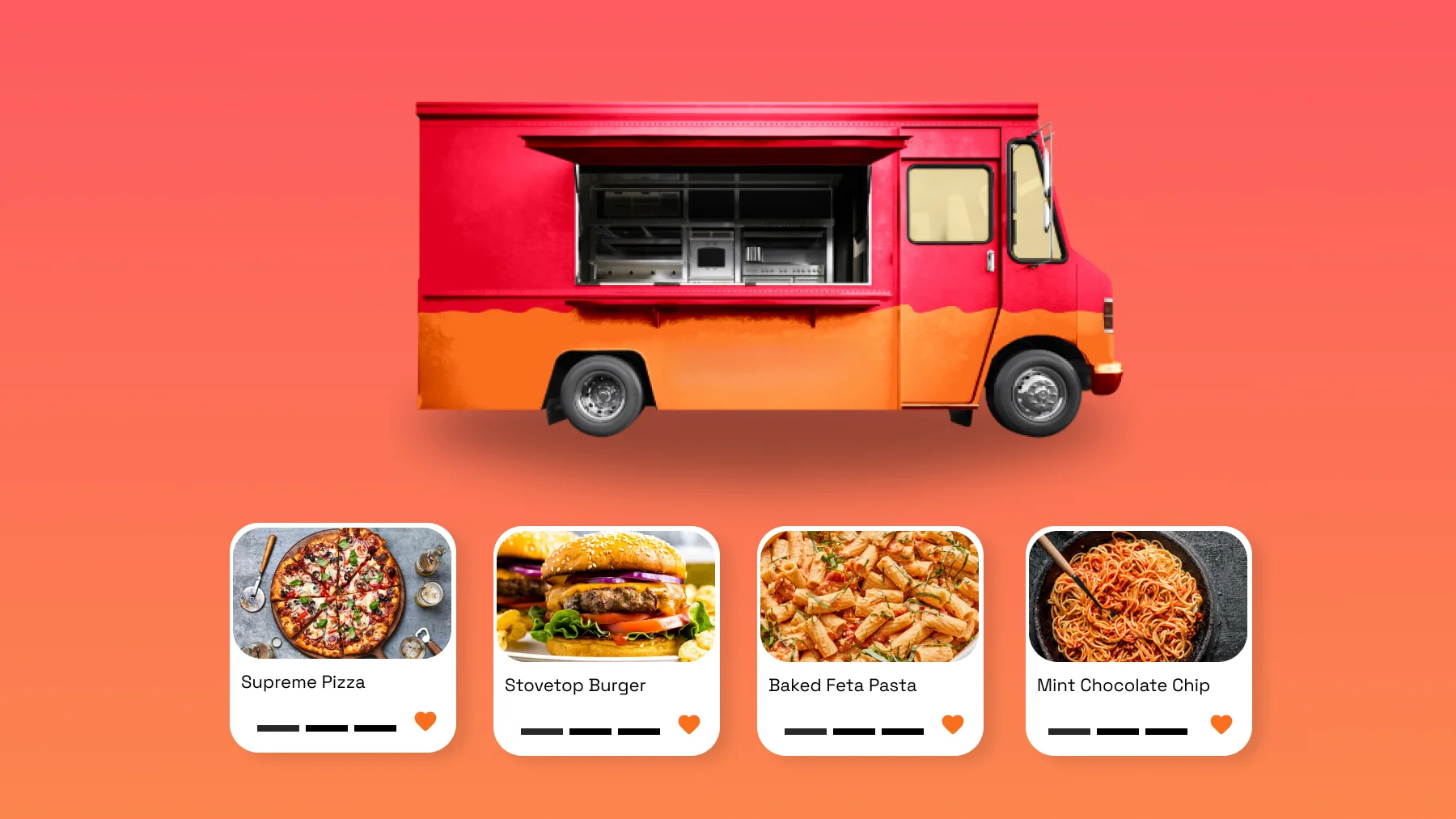A Complete Guide On How To Start A Restaurant
Opening a restaurant is definitely not an easy process – even for people who already have hands-on experience in it. So, if this is the first time you are setting up your own restaurant, The best restaurant website creator brings to you this foolproof checklist that will guide you through the process of opening your dream restaurant without stressing yourself out.
WHAT DO YOU NEED TO OPEN A RESTAURANT
From choosing the perfect location to arranging for finance, selecting the name for the restaurant, buying equipment, hiring staff – there are many things that need to be carefully considered.
1. Determining the Type of the Restaurant
The very first decision that any ambitious restaurateur must make is about the nature or type of restaurant that he wishes to run. A firm decision about whether it will be a high-end, fine dining or a casual dining restaurant, will it have one specific cuisine like Italian, French or Indian or will it be intended to function as a pub or microbrewery.
2. Location
Once the type of restaurant is decided, the location from which the restaurant will function must be chosen. A restaurateur must do his homework thoroughly before choosing the restaurant location. It is best to choose a busy area that will bring in lots of foot traffic to the restaurant. The space must be equipped with enough parking space with not too many similar type restaurants within a three kilometer radius.
3. Choosing a Name
Since this is the word with which your restaurant and the business is going to be associated forever, it must be chosen with great thought. It could be a family name or a word that reflects the chosen cuisine, location or theme. One could also play with words to create the desired effect and attract guests.
4. Restaurant Menu
A restaurant menu can make or break the business. So, design a menu that is well-written, descriptive with easy-to-read fonts and attractive with an uncluttered layout.
5. Restaurant Design
It is necessary that a restaurant’s design be a balance between aesthetics and seating capacity. Also, it is important that the design is practical and improves functionality over a long period of time.
6. Purchase of Equipment and Furniture
Equipment and furniture must be purchased not only for the dining room but also for the other areas like the front-house and back-house. To finish this process on a shoestring budget, you could hire used equipment from reliable sources.
7. Hiring Personnel
Recruiting people for both the kitchen and the floor can be done close to the inauguration day. Recruiting the perfect person for each position like kitchen staff (including chefs), waitstaff and bartenders is important.
8. Business Plan
A restaurant business plan is crucial as it helps a restaurateur foresee potential problems, like lack of a population base that might support the business. A robust business plan is also fundamental to securing external funding for the restaurant business. Several people shy away from a restaurant business primarily because of lack of funds. But, a well devised business plan will aid in securing finance from banks, small funding agencies or private investors. Also get approved the necessary licenses and permits that are mandatory for your kind of restaurant.
9. Advertising
Advertising exercise is unskippable for new restaurants. In today’s competitive world, it is important to supplement offline advertising exercises with digital and social media campaigning too. In addition to advertising on newspapers and radio, new restaurants must also aggressively advertise on Facebook, Twitter and Instagram. Such advertising campaigns must depend on the core concept of the restaurant and the target audience that a restaurant wishes to reach.
RESTAURANT IDEAS FOR BUSINESS
Before starting a restaurant, a restaurateur must carefully consider all the options available to him. Only when a restaurateur understands the type of restaurant that he wants to open, he will be able to create success in the field.
The restaurant industry can be classified based on the:
- Menu Style
- Recipe Preparation Method
- Pricing Strategies
- Seating
- Method of food service
The most common types of restaurants are:
1. Fine Dining
Such restaurants offer an upscale meal experience with many courses (like salad, appetizers, soups, entree, main courses, desserts, etc) in an environment filled with class and elegance.
2. Ghost Restaurant
This is nothing but a virtual restaurant serving customers only through phone or online orders or both. Such restaurants do not have a traditional storefront. Running such a business requires only a kitchen and delivery partners.
3. Casual Dining
In such restaurants, food is served to customers at the table. Food is moderately priced. While the decor is unique based on the primary cuisine, the atmosphere is mostly low-key. This ‘fancy’ aspect differentiates such restaurants from the fine dining restaurants.
4. Fast Casual
This restaurant serves food relatively quickly. But, the food is healthier than a fast food restaurant and is also affordable than a casual dining restaurant. Such restaurants are known for their quality food, counter service (table service is not provided) and decor that is casual and contemporary.
5. Fast Food
Due to the popularity of franchise restaurant chains like KFC, Pizza Corner, Pizza Hut, etc. it has become the most widely recognized type of restaurant. Food is delivered over the counter or through a curb-side pickup. This model operates on a self-service model.
6. Family Style Restaurant
This is similar to a casual dining model. But the difference is that food is served in large dishes. Customers engage in self-service and also pass on the food to other diners at the table. These restaurants cater to families with children or groups of friends.
7. Food Truck, Carts, Stands
They specialize in a single type of food like tacos, sandwiches, hot dogs, ice cream or smoothies. They have only a few items on the menu. Since they focus on speedy service, they are sometimes categorized together with fast food restaurants. Seating options in such food trucks, carts or stands are either sparse or even non-existent.
8. Cafe
Cafes have an outdoor seating facility with an absolutely relaxed atmosphere. They offer coffee, tea, pastries, desserts and other small items for breakfast, brunch or lunch. Diners order food at the counter and pay for it across the counter. Since customers serve themselves, this business model does not require too many staff.
9. Buffet Type Restaurant
A buffet concept is well suited for specialty cuisines like pizza, Indian, Chinese, Mediterranean, etc. A buffet type restaurant is like an extension of the family style restaurant. Guests are served a variety of food items at a fixed price.
10. Pubs
Such culinary points are meant for people to unwind with beer or other alcoholic beverages. Modern pubs have begun to offer food items along with alcoholic and non-alcoholic beverages. Pubs provide full table service along with a bar service. Pubs operating in large spaces also have pools, dance floors and darting spots.
The other common types of restaurants are cafeteria, coffee house, diner, pop-up restaurant, bistro, contemporary casual, destination restaurant, teppanyaki grill, Mongolian barbecue, etc.
RESTAURANT STARTUP CHECKLIST
Here is a quick run-through of things that would be handy for every restaurateur before the restaurant inauguration day.
1. Restaurant Concept
As already discussed above, a restaurateur must be ready with the concept around which the entire business will be built.
2. Competition
A restaurant owner must know beforehand the status of local competition and where his own business would stand once the restaurant starts functioning.
3. Location
A restaurateur must select an appropriate location. Operating in a busy locality is important. Although one might end up paying heavy rents, the revenue will be equally good too.
4. Write a Robust Business Plan
A business plan is the roadmap for any business, not just a restaurant. A restaurant’s business plan must describe the concept, location, estimated revenue for the first year and consecutive years, and so on.
5. Get in Touch with Investors
Utilize the restaurant business plan well to lure investors into the business. It is important to keep all the paperwork ready irrespective of the type of investor that a restaurateur goes to meet.
6. Hiring Staff
As discussed above, hiring the right people for the right jobs is key for smooth everyday operations of the restaurant.
7. Write an Enticing Menu
The calling card to the public is the restaurant menu. The size and style of the menu must be based on the variety of food the restaurant offers.
8. Using Social Media for Propaganda
Advertising must be done both on the online and offline platforms so that people get to know the brand in several ways.
9. Ordering Equipment
This purchase must be done after the menu is completely designed. Only then, the restaurateur will know the exact number and kinds of commercial equipment necessary for his new restaurant.
10. Organizing a Grand Opening
A mega launch event can be preceded by a quiet opening (also known as soft opening). This will help a restaurateur gain an insight into the inevitable bugs that all new restaurants possess and work towards removing them.
HOW TO FIND INVESTORS FOR A RESTAURANT
Aspiring restaurant entrepreneurs can resort to the following means for financing options:
1. Friends and family
They are the first people willing to help you with money and will also motivate you to achieve your dreams. But, while borrowing money from close circles, it is important to make the people involved understand that the risk in a restaurant business is high and they might even lose their entire investment.
2. Extended Network
One can also ask one’s own family and friends to introduce us to their circle of family and friends. While pitching the business plan and seeking investment, a restaurateur must ensure that the people clearly understand the risks involved.
3. Seeking Help From Wealthy Individuals
By befriending wealthy individuals in a country club or other socializing spots and making new connections, a restaurateur can garner financial support for his new restaurant.
4. Restaurant Incubators
Incubators are support programs that aspiring restaurateurs can make use of in two possible ways. While some incubators charge a program fee for becoming participants, others invest money in the restaurant and seek a claim in future earnings in return.
5. Angel Investors
Such people are wealthy individuals or business leaders who wish to multiply their wealth and assets by investing in innovative startups. Restaurateurs with innovative ideas can make use of such people and their interests.
6. Venture Capitalists
They are similar to angel investors as they too show great interest in investing in innovative startups. But, unlike angel investors, venture capitalists are not individuals. They are a group of people who belong to a larger company or entity. Restaurateurs must seek support from a company that not only provides money but also adds value to the business proposition.
7. Making Use Of Social Media
Aspiring restaurateurs can also publicly announce on social media stating that they are looking for investors for their upcoming business venture. This will attract interested investors to you in several ways. In the social media posts, describe how your concept is unique. Include photographs of sample dishes so that prospective financiers get a clear idea of what you intend to do with their money.
8. E-Mail
Restaurateurs can look up for email addresses on official company websites and directories. Restaurateurs must briefly introduce themselves and state their restaurant concept in a short email. It is important to be patient until people respond to the email. After a particular period of time, when you receive no response, send a follow-up email. If you do not receive a response for the follow-up email as well, then it is time to consider other financing options.
HOW TO TAKE YOUR RESTAURANT ONLINE
Having taken back-breaking efforts and experiencing stressful days before the launch of the restaurant, it is absolutely imperative that the business enjoys a great online presence as well.
Having an attractive and user-friendly restaurant website is the first thing that every restaurateur must create. Restaurantify can be entrusted with the task of providing website templates that form the basis for creating websites with easy navigation and an elegant look. You can choose templates based on the theme of the business and get the website ready within 10 minutes – that too at an affordable price.
As an individual aspiring to launch a food business and grow rapidly, this blog would have been a complete guide to everyone seeking a foolproof checklist. Restaurantify wishes you good luck on your new dream culinary venture.
LATEST BLOG POST
What Is Happy Hour? 10 Foolproof Ways to Make Your Happy Hour Successful
ShareTweetSharePin0 Shares
What does a hostess do at a restaurant? Duties And Responsibilities
ShareTweetSharePin0 Shares
200 + Cafe Name Ideas That Will Make Your Business Stand Out
ShareTweetSharePin0 Shares
How to Craft an Effective Restaurant Mission Statement: A Step-by-Step Guide
ShareTweetSharePin11 Shares
How to Create Food Truck Business Plan? Complete Guide
ShareTweetSharePin11 Shares
How to Choose the Right Restaurant Name (+ 190 Great Ideas & Examples)
ShareTweetSharePin11 Shares








